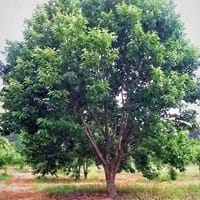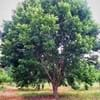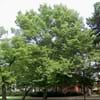Life Span
Perennial
Perennial
Type
Tree
Bulb or Corm or Tuber
Origin
North America, Northeastern United States, Mid-Atlantic United States, Southeastern United States, Canada
South America, Argentina
Types
Not Available
Not Available
Habitat
Deciduous forests, Forest margins
Temperate Regions
USDA Hardiness Zone
5-8
5-9
Sunset Zone
2a, 2b, 3a, 3b, 4, 5, 6, 7, 8, 9, 14, 15, 16, 17
21,22
Habit
Oval or Rounded
Clump-Forming
Flower Color
Gold, Light Green, Light Yellow, White
Light Blue, Light Purple, Silver, Sky Blue
Flower Color Modifier
Bicolor
Bicolor
Fruit Color
Light Green, Sienna, Chocolate
Not Available
Leaf Color in Spring
Green
Green, Light Green, Gray Green
Leaf Color in Summer
Green
Light Green
Leaf Color in Fall
Yellow, Yellow green, Gold
Several shades of Green
Leaf Color in Winter
Not Available
Light Green
Leaf Shape
Toothed
Grass like
Plant Season
Spring, Summer, Fall
Spring
Sunlight
Full Sun, Partial Sun
Full Sun, Partial Sun, Partial shade
Type of Soil
Clay, Loam
Clay, Loam, Sand
The pH of Soil
Acidic, Neutral
Acidic, Neutral, Alkaline
Soil Drainage
Well drained
Well drained
Bloom Time
Early Summer
Early Spring, Spring, Late Winter
Tolerances
Not Available
Drought
Where to Plant?
Ground
Container, Ground
How to Plant?
Seedlings, Stem Planting
By dividing rhizomes, tubers
Plant Maintenance
Medium
Medium
Watering Requirements
Needs very little water
Average Water Needs, Do Not over Water, Requires regular watering
In Summer
Lots of watering
Lots of watering
In Spring
Moderate
Moderate
In Winter
Average Water
Average Water
Soil pH
Acidic, Neutral
Acidic, Neutral, Alkaline
Soil Type
Clay, Loam
Clay, Loam, Sand
Soil Drainage Capacity
Well drained
Well drained
Sun Exposure
Full Sun, Partial Sun
Full Sun, Partial Sun, Partial shade
Pruning
Cut back all stems to the same height, Pinch or prune as they grow to promote branching and bushiness, Remove damaged leaves, Remove dead branches, Remove dead leaves
Remove damaged leaves, Remove dead branches, Remove dead leaves
Fertilizers
14-14-14 Fertilizer, Compost, General purpose liquid or granular fertilizer
All-Purpose Liquid Fertilizer
Pests and Diseases
Chestnut Blight
Slugs, Snails
Plant Tolerance
Drought
Drought
Flowers
Insignificant
Showy
Flower Petal Number
Not Available
Single
Foliage Texture
Medium
Medium
Foliage Sheen
Matte
Matte
Attracts
Bees, Birds, Deers
Bees, Birds, Hummingbirds
Allergy
conjunctivitis, Vomiting
Not Available
Aesthetic Uses
Showy Purposes
Showy Purposes
Beauty Benefits
Not Available
Not Available
Environmental Uses
Air purification, Wildlife
Air purification
Medicinal Uses
Arthritis, Cough, Sore throat, Swelling
No Medicinal Use
Part of Plant Used
Sap, Wood
Flowers
Other Uses
Decorative veneers, flooring, paneling, Used in Furniture, Used in pulpwood and lumber production
Not Available
Used As Indoor Plant
No
Yes
Used As Outdoor Plant
Yes
Yes
Garden Design
Edible, Feature Plant, Shade Trees
Container, Lawns and Turf, Mixed Border, Rock Garden / Wall, Wildflower
Botanical Name
CASTANEA dentata
Ipheion uniflorum
Common Name
American Chestnut
Spring Starflower, Springstar
In Hindi
अमेरिकी शाहबलूत
Spring Starflower
In German
Amerikanische Kastanie
Frühling Borretsch
In French
Châtaignier d'Amérique
Spring Starflower
In Spanish
Castanea dentata
primavera Flor de estrella
In Greek
american καστανιάς
άνοιξη starflower
In Portuguese
castanea americana
primavera Starflower
In Polish
Kasztan amerykański
Wiosna Starflower
In Latin
English castaneis
Spring Starflower
Phylum
Magnoliophyta
Magnoliophyta
Class
Magnoliopsida
Lilopsida
Order
Fagales
Asparagales
Family
Fagaceae
Liliaceae
Clade
Angiosperms, Eudicots, Rosids
Angiosperms, Monocots
Tribe
Not Available
Gilliesieae
Subfamily
Not Available
Allioideae
Number of Species
Not Available
Not Available
Importance of American Chestnut and Spring Starflower
Want to have the most appropriate plant for your garden? You might want to know the importance of American Chestnut and Spring Starflower. Basically, these two plants vary in many aspects. Compare American Chestnut and Spring Starflower as they differ in many characteristics such as their life, care, benefits, facts, etc. Every gardener must at least have the slightest clue about the plants he wants to plant in his garden. Compare their benefits, which differ in many ways like facts and uses. The medicinal use of American Chestnut is Arthritis, Cough, Sore throat and Swelling whereas of Spring Starflower is No Medicinal Use. American Chestnut has beauty benefits as follows: Not Available while Spring Starflower has beauty benefits as follows: Not Available.
Compare Facts of American Chestnut vs Spring Starflower
How to choose the best garden plant for your garden depending upon its facts? Here garden plant comparison will help you to solve this query. Compare the facts of American Chestnut vs Spring Starflower and know which one to choose. As garden plants have benefits and other uses, allergy is also a major drawback of plants for some people. Allergic reactions of American Chestnut are conjunctivitis and Vomiting whereas of Spring Starflower have Not Available respectively. Having a fruit bearing plant in your garden can be a plus point of your garden. American Chestnut has showy fruits and Spring Starflower has no showy fruits. Also American Chestnut is not flowering and Spring Starflower is not flowering . You can compare American Chestnut and Spring Starflower facts and facts of other plants too.





